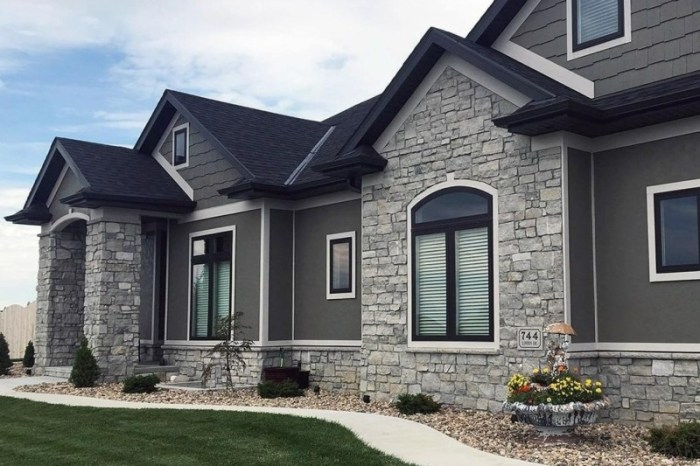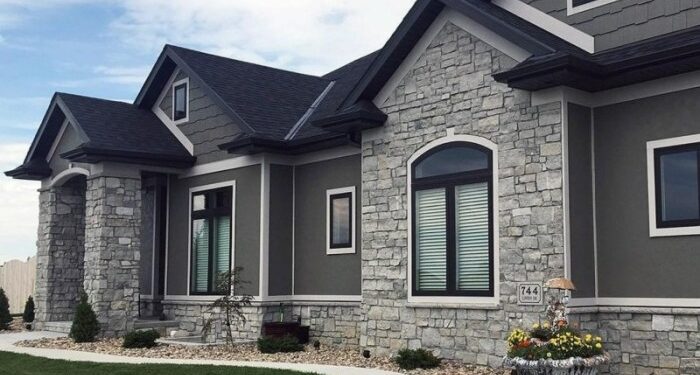Exploring the anticipated costs of house siding in 2025 unveils a landscape shaped by various factors, from material choices to technological advancements. As we delve into the realm of house siding expenses, a tapestry of pricing nuances and considerations emerges, offering a glimpse into the future of home exterior design.
In the following sections, we will dissect the key elements that influence house siding costs, examine popular siding materials expected in 2025, analyze regional pricing disparities, and explore how technology is revolutionizing the siding industry.
Factors Affecting House Siding Costs
When considering the cost of house siding, several key factors come into play that can significantly impact the overall expense. These factors include the type of material chosen, the quality of the siding, the size of the project, and the labor costs involved.
Material Type
The material type is one of the most important factors affecting house siding costs. Different materials such as vinyl, wood, fiber cement, or metal have varying price points. For example, vinyl siding is generally more affordable compared to fiber cement or wood siding.
The durability, maintenance requirements, and aesthetic appeal of each material also play a role in determining the cost.
Quality of Siding
The quality of the siding chosen can also impact the overall cost. Higher quality siding materials may come at a premium price due to their enhanced durability, weather resistance, and longevity. While opting for better quality siding may initially cost more, it can lead to savings in the long run by reducing maintenance and replacement costs.
Size of the Project
The size of the house siding project is another crucial factor influencing costs. Larger homes or buildings require more materials and labor, which can drive up the overall expenses. Additionally, the complexity of the project, such as unique architectural features or intricate designs, can also affect the cost of installation.
Labor Costs
Labor costs play a significant role in determining the overall expense of house siding. The cost of hiring professional contractors to install the siding can vary based on factors such as location, experience level, and the scope of work involved.
Skilled labor is essential for proper installation, ensuring the longevity and performance of the siding.
Popular House Siding Materials in 2025
In 2025, various house siding materials are commonly used, each with its own unique characteristics, costs, and maintenance requirements.
Vinyl Siding
Vinyl siding remains a popular choice due to its affordability and low maintenance requirements. It is available in a wide range of colors and styles, making it a versatile option for homeowners. The cost of vinyl siding typically ranges from $2 to $7 per square foot, depending on the quality and thickness.
Wood Siding
Wood siding provides a classic and natural look to a home but requires more maintenance compared to other materials. Cedar and redwood are popular wood siding options known for their durability and resistance to rot. The cost of wood siding can vary significantly, ranging from $6 to $15 per square foot, depending on the type of wood chosen.
Fiber Cement Siding
Fiber cement siding is a durable and low-maintenance option that mimics the look of wood or stucco. It is resistant to fire, rot, and pests, making it a long-lasting choice for homeowners. The cost of fiber cement siding typically falls between $5 to $12 per square foot, depending on the brand and quality.
Metal Siding
Metal siding, such as aluminum or steel, offers a modern and sleek appearance to a home
Regional Variances in House Siding Pricing

When it comes to the cost of house siding, geographical location plays a significant role. Factors such as supply and demand, labor costs, and material availability can vary greatly from one region to another, impacting the overall pricing.
Urban vs. Rural Pricing
In urban areas, where there is high demand for construction and limited space for storage, house siding costs may be higher due to increased transportation costs for materials and labor. On the other hand, in rural areas where there is more space and easier access to materials, the cost of house siding may be lower.
Impact of Climate and Weather Conditions
Regions with extreme weather conditions, such as areas prone to hurricanes, heavy snowfall, or intense sunlight, may require more durable and weather-resistant siding materials. This can result in higher costs compared to regions with milder climates. Additionally, the need for additional insulation or weatherproofing measures can also impact the overall pricing of house siding.
Technology Trends Influencing Siding Costs
Technology plays a significant role in shaping the cost of house siding, as advancements in materials and installation methods can impact pricing. Additionally, the growing demand for sustainable and eco-friendly options has led to the development of new siding solutions that may come at a premium.
Innovative Materials and Installation Methods
Innovative materials such as engineered wood, fiber cement, and metal composites are gaining popularity in the siding industry. These materials offer durability, low maintenance, and a modern aesthetic, but they often come with a higher price tag due to the advanced technology used in their production.
Installation methods like interlocking panels or pre-finished siding can also impact costs, as they require specialized techniques that may increase labor expenses.
Sustainable and Eco-Friendly Options
With an increasing focus on sustainability, many homeowners are opting for eco-friendly siding materials like recycled plastic, reclaimed wood, or even living green walls. While these options may have higher upfront costs, they can lead to long-term savings through energy efficiency and reduced environmental impact.
Factors such as manufacturing processes, longevity, and maintenance requirements also contribute to the overall cost of sustainable siding solutions.
Final Thoughts
Reflecting on the intricacies of house siding costs in 2025, it becomes evident that the evolving landscape of materials and technologies is reshaping the way we perceive home exteriors. From budget-friendly options to sustainable choices, the realm of house siding presents a dynamic tapestry of possibilities for homeowners seeking to enhance both aesthetics and functionality.
FAQ Guide
How do material type, quality, and size impact house siding costs?
The choice of material, its quality, and the size of the siding project are crucial determinants of overall costs. Higher quality materials and larger sizes typically lead to increased expenses.
Are there differences in house siding pricing based on geographical location?
Yes, regional variations play a significant role in pricing, with urban areas generally having higher costs compared to rural regions due to factors like demand and accessibility.
How do technological advancements influence the cost of house siding?
Technological innovations can impact costs by introducing new materials, installation methods, and sustainable options that may come at a premium price point.



